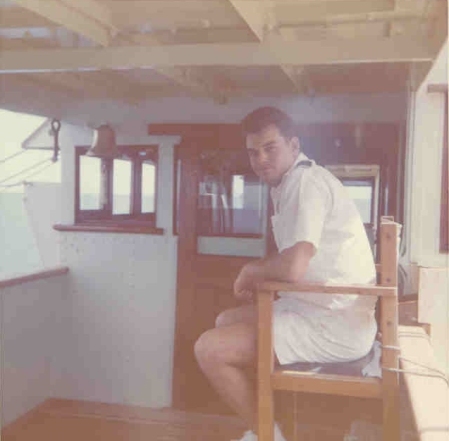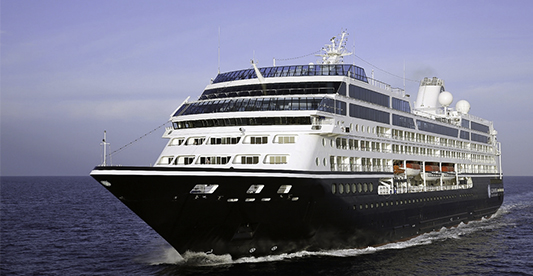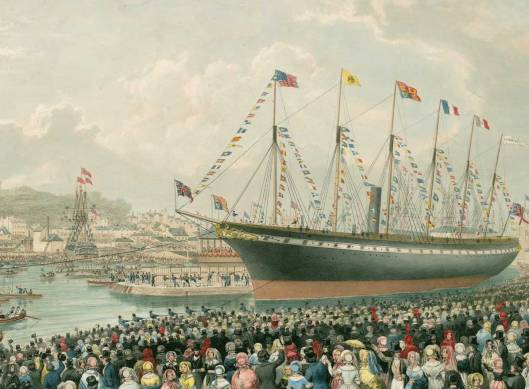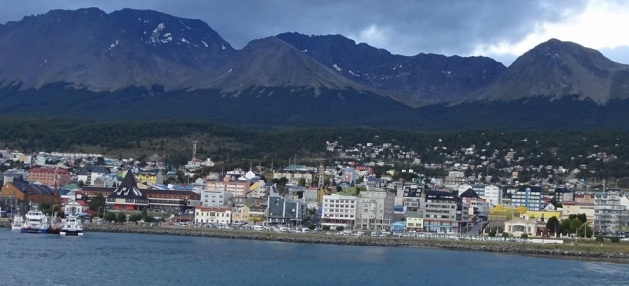
My first view of Buenos Aires from our balcony – not a very attractive site with the heavy rain clouds.
Our arrival meant that we would be alongside from early Saturday morning until Sunday afternoon, when the ship would sail with a new ‘cargo’ of passengers.
Our plan was to experience BA on Saturday morning, using a ‘walking guide’ to get an idea of the layout of the city.
We booked our walking tour via the internet with http://www.buenostours.com/ and for a small extra price besides picking us up from the ship (which was part of the basic price), they would return us to the ship, which meant that we would not have to experience using a local taxi.
I may be doing BA taxi drivers a disservice, but I had read many negative comments of taxi drivers taking advantage of cruise passengers.
We would return to the ship and spend part of Saturday afternoon packing, and leave the ship on Sunday morning around 8.30 am, We’d booked transport via another company http://www.transferlubre.com.ar/ to take us all to our hotel.
I can recommend both companies, because they were both efficient and easy to deal with over the internet – and both spoke English.
Our guide was an American, Jack, who had lived in BA for five years – he was very good and answered all our questions and also suggested various places to visit and what to be careful about when out and about.

We met Jack outside Basilica de Nuestra Senora del Rosario Convento de Santo Domingo.
The statue in front is the mausoleum of Manuel Belgrano, who took part in the fight for Independence and he also created the Argentinian flag.

Flag of Argentina.

Not your average BA taxi – something different.

The one thing that Jack told us to do while out and about was to look up and view the tops of the buildings – very good advice.
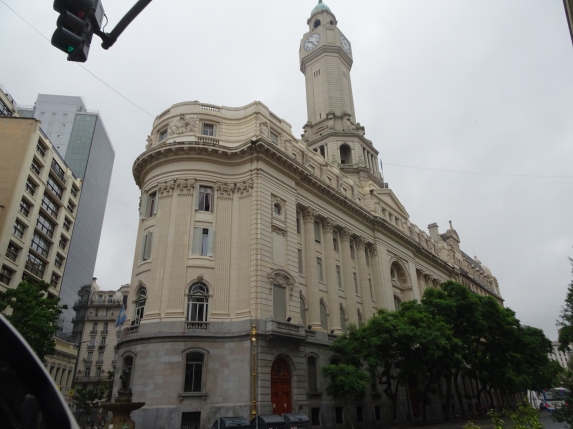

Many buildings reminded me of Paris & Madrid.

The oldest pharmacy in BA

Inside – it was as if it was yesteryear.

Paintings on the wall and the ceiling

Ceiling painting – first opened in 1835 and still trading.
As well as being the oldest pharmacy in S. America it is also the oldest shop in BA.

The first book shop in Buenos Aires opened here in 1785, but it was originally a pharmacy that sold books, and later was where the first newspaper for BA was produced.
Later in 1830 it was the library for the nearby college. In 1926 the original building was demolished and the current building took its place.

Literary café underground


A copy of a painting of the original book shop in 1830 is shown in the current book shop’s window.

We had a short trip on the metro, which began operating in December 1913, it is standard gauge, and the system was 55 km (34 miles), and was extended a further 7.1 km in the 1980’s.

The station at which we boarded the train was named Peru.

The platform going the other way – everywhere was spotlessly clean and I didn’t see any litter.

Alejo Julio Argentino Roca Paz 1843 – 1914,
the area around this statue is a favourite place for demonstrations . . .

Now this is what you might call a wide street –

An aerial view of the same street – which is called 9th of July Avenue.
(La Avenida 9 de Julio)
Seven lanes in each direction – parallel streets on either side, which each has two lanes, a total of eighteen lanes and through the centre area (the white centre pieces) are for bus lanes and rapid transit.
There are two wide medium strips between the side streets and the main roads. When we crossed at a normal walking pace we were never able to get from one side to the other in one ‘go’, before the pedestrian lights changed.
We (as were many others) were always stranded on islands waiting for the next pattern of pedestrian lights. This is not a complaint, because we never felt threatened by the traffic, but I wanted to emphasis just how wide is this avenue.
The avenue was planned in 1888, but it took until 1935 before work began, and it was eventually completed in the 1960s.

It is said that this is the widest street in the world.

As a comparison – Buenos Aires in 1820 (from a paining).

Time for a short break and a cup of coffee at the London City

Memories of a European coffee house . . .

Some had tea, one couple shared a slice of cake, and as usual I had black coffee (lack of imagination).
London City opened in September of 1954 and was a refuge for poets, artists, politicians, who moved from the Municipal Palace to the Deliberative Council building, journalists who entered and left the neighbor building of the newspaper La Prensa and of the porteños and tourists who strolled and worked along the beautiful Avenida de Mayo.
“London City” was declared notable coffee by the Commission for the Protection and Promotion of the notable cafes, bars, billiards and confectioneries of the city of Buenos Aires.
The comments in italics have been copied from the London City web site.

Our group and the guide at the end of the table.

Had to take this guy in the corner and after a little research realised that he was one of the ‘refugee writers’, perhaps one the most famous, Julio Cortzázar 1914 -1984.
He was born in Belgium of Argentinian parents, his father was attached to the Argentinian diplomatic corps. Because Belgium was occupied by the Germans in WW1 the family moved to Switzerland, and even had a short time in Spain before moving back to Buenos Aires in 1919.
He planned and wrote his novel ‘The Awards‘ at one of the tables in London City. It was published in 1960.

Our next stop was the Metropolitan Cathedral – the land for this site was set aside in 1580, and various churches have been built here since that date. The first church was replaced in 1605, and ever since there have been ongoing changes due to danger of collapsing, being rebuilt in 1684, being added to and changed until the final building was completed in 1863.
 Looking towards the main alter area.
Looking towards the main alter area.
 I was surprised to see a mausoleum within the cathedral guarded by armed soldiers.
I was surprised to see a mausoleum within the cathedral guarded by armed soldiers.
 They may look ornamental, but I don’t think they missed much of what was happening.
They may look ornamental, but I don’t think they missed much of what was happening.
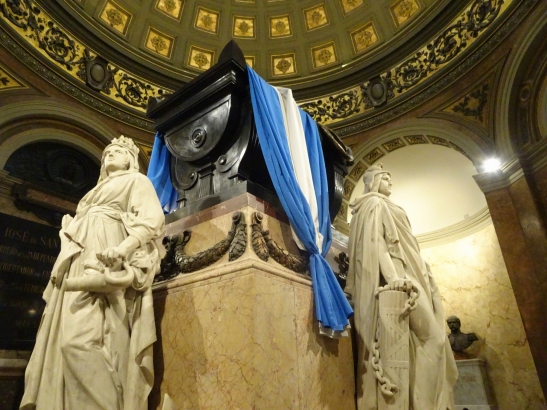
The mausoleum contains the remains of
General José Francisco de San Martín y Matorras Feb 1778 – Aug 1850.
There are three figure guarding the tomb, and they represent Argentina, Peru and Chile, which are the three regions freed by the general from Spanish rule.
The mausoleum also contains the remains of remains of Generals Juan Gregorio de las Heras (1780 – 1866) – he was in business until he was twenty six and then joined the hussars and worked his way up in rank, and after many battles became the Governor of Buenos Aires Province.
Also in the mausoleum is Tomas Guido (1788 – 1866) after some military service he moved in to politics and eventually became vice president of the Senate of the Argentine Confederation in 1857.
Finally the mausoleum it is also the resting place of Unknown Soldier.
On to our final destination and the end of our walking tour.

Casa Rosada (Pink House)
Set at one end of Plaza de Mayo, which has been a large square for the people since 1580.
The origin of Casa Rosada is that it used to be a fort and over time it transformed in to government offices for the colonial Spanish and eventually became Government House. It is no longer the residence of the President, but mainly a museum, which is free to enter on Saturday & Sunday.
The President lives in Quinta de Olivos, which is located at the north side of Buenos Aires and has been the residency of the President since the 1930’s.
For those who are interested the famous ‘balcony’ of Eva Perón (Evita) is the one with the five arches, not the one with the windows.
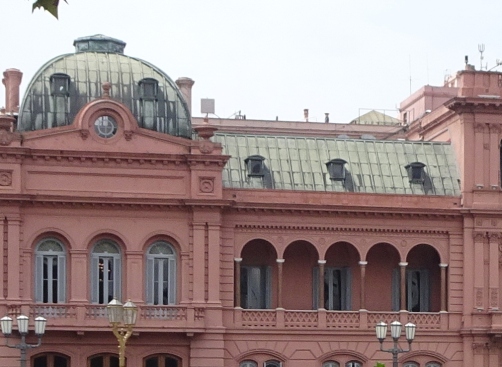

Eva Perón (Evita) in 1944

Born María Eva Duarte May 1919 – Died Eva Perón July 1952
After her death she was embalmed with glycerin (she was to be displayed in a similar way as Lenin), but while the monument, in which she would be displayed, was being built the governments changed and her body ‘went missing’ for sixteen years. It was not until 1971 that the government admitted that the body was in a crypt in Milan, Italy, under the name “María Maggi.”
In 1971 her body was flown to Spain where Juan Perón maintained the corpse in his home, and kept it in the dining room for two years.
Perón returned to Argentina in 1973 as President for the third time, but died in office in 1974. His third wife Isabel, who had been elected Vice President, succeeded him.
She had Eva Perón brought back to Argentina from Spain, and for a brief time Eva Perón was on display along side her husband.
Eventually Eva Perón was buried in the Duarte family tomb in Buenos Aires
In a later blog I’ll have more to say of where Eva Perón is buried.





























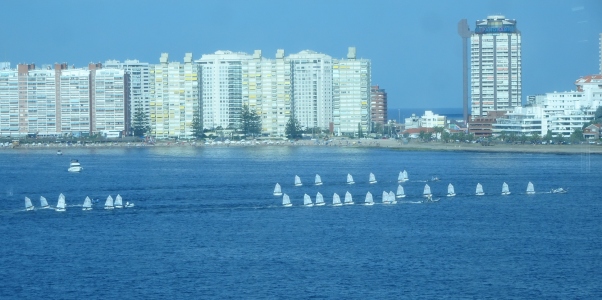






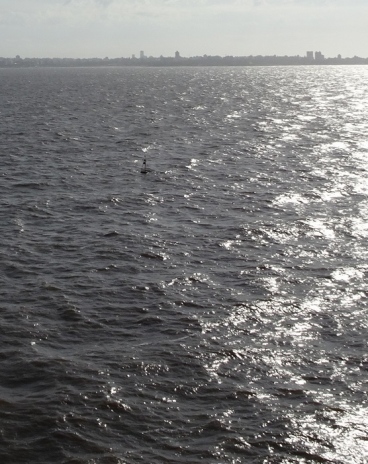


















































 To say that I noticed the difference from my time at sea is an understatement. My two friends had been at sea all their lives and had experienced the gradual change, but for me it was an eye opener.
To say that I noticed the difference from my time at sea is an understatement. My two friends had been at sea all their lives and had experienced the gradual change, but for me it was an eye opener.

